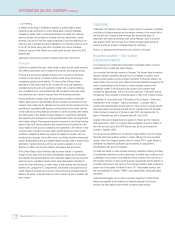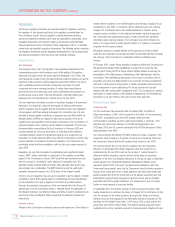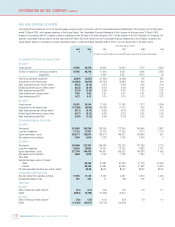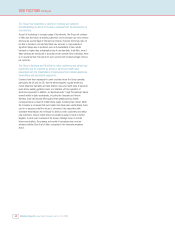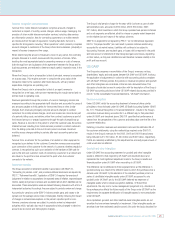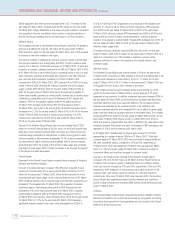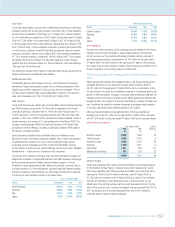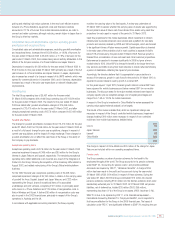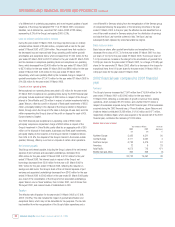Vodafone 2003 Annual Report Download - page 28
Download and view the complete annual report
Please find page 28 of the 2003 Vodafone annual report below. You can navigate through the pages in the report by either clicking on the pages listed below, or by using the keyword search tool below to find specific information within the annual report.
Vodafone Group Plc Annual Report & Accounts and Form 20-F 2003
26
RISK FACTORS Continued
The Group may experience a decline in revenues per customer
notwithstanding its efforts to increase revenues from the introduction of
new services.
As part of its strategy to increase usage of its networks, the Group will continue
to offer new services to its existing customers, and to increase non-voice service
revenues as a percentage of total service revenue. However, the Group may not
be able to introduce commercially these new services, or may experience
significant delays due to problems such as the availability of new mobile
handsets or higher than anticipated prices of new handsets. In addition, even if
these services are introduced in accordance with expected time schedules, there
is no assurance that revenues from such services will increase average revenue
per customer.
The Group’s business and its ability to retain customers and attract new
customers may be impaired by actual or perceived health risks
associated with the transmission of radiowaves from mobile telephones,
transmitters and associated equipment.
Concerns have been expressed in some countries where the Group operates,
particularly the UK and the US, that the electromagnetic signals emitted by
mobile telephone handsets and base stations may pose health risks at exposure
levels below existing guideline levels, and interfere with the operation of
electronic equipment. In addition, as described under “Legal Proceedings”above,
several mobile industry participants, including the Company and Verizon
Wireless, have had lawsuits filed against them alleging various health
consequences as a result of mobile phone usage, including brain cancer. While
the Company is not aware that such health risks have been substantiated, there
can be no assurance that the actual, or perceived, risks associated with
radiowave transmission will not impair its ability to retain customers and attract
new customers, reduce mobile telecommunications usage or result in further
litigation. In such event, because of the Group’s strategic focus on mobile
telecommunications, its business and results of operations may be more
adversely affected than that of other companies in the telecommunications
sector.


